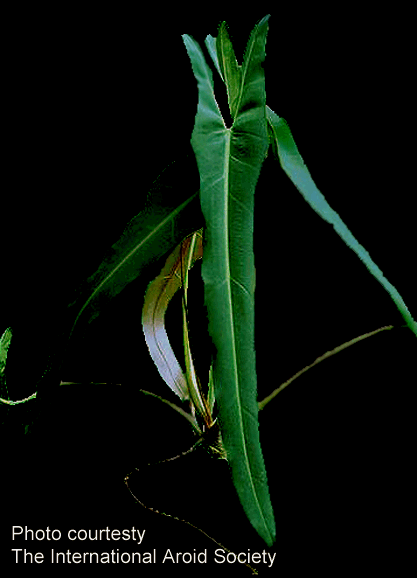- Latina Jungle Queen
- Aug 12, 2023
- 5 min read
Updated: Sep 18, 2023

Imagine your plants as if they were babies, nurtured in their nursery pots just like they were in the womb.
When is it time to repot?
There comes a time when babies must leave their wombs, and the same principle applies to our botanical offspring or plant babies. Although they may thrive in their initial nursery pots for years, eventually they must be repotted or transplanted to larger containers. Typically, it's recommended to choose a pot that's around 1 to 2 inches larger in diameter than the current pot size.
The roots are extending out through the drainage hole(s) located at the base of the nursery pot or planter. This may be a sign of a root-bound plant. As roots expand, they gradually displace the soil within the container, potentially occupying more room than the soil volume itself. The emergence of visible roots at the soil's surface or bottom of the nursery pot serves as an indicator that your plant is nearing, if not already experiencing, a root-bound condition. You may also see signs of yellowing or wilting leaves.
The plant's foliage is more than double the size of its nursery pot.
The plant is extremely top-heavy, and may topple over easily.
The plant's potting mix becomes compact and is drying out more quickly than before requiring more frequent waterings. Soil compaction can lead to inefficiencies or root death and could be due to poor soil/substrate.
Make sure to select the right time. The best time to repot a plant is during its active growing season, typically in spring or summer. This gives the plant a chance to recover quickly.
What is soil compaction?

Soil compaction occurs when soil particles are pressed together, reducing pore space between them. It becomes so compact that it can suffocate the roots due to lack of oxygen. You can aerate the soil using the chopstick method, but when the soil becomes too dense and compact, it's best to repot and replace it with a sustainable substrate that will not suffer from soil compaction.
We aren't dirtbags

With over a decade of experience in the horticulture industry, I gained a profound understanding of the significance of utilizing an aerated and organic potting medium.
Aroids, in particular, need an aerated potting medium. Most aroids like Philodendrons, Monsteras, and Anthuriums are epiphytic and not terrestrial, so they grow and anchor themselves on trees having exposed roots with little to no soil.
Most store-bought potting mix is mainly peat-based and becomes compact, suffocating the roots and not allowing for even distribution of water. Peat moss is not considered a renewable source, and many store-bought mixes have added junk and fillers like plastic.
Our potting medium is organic, renewable, and naturally made from coconut coir, horticulture charcoal, and perlite. It's essentially a "soil-less" medium. Coconut coir comes from the coconut's husk.
In addition to its renewable nature, coconut coir offers several advantages. It facilitates aeration and creates an optimal setting for plant roots, ensuring they receive appropriate levels of water, air, and nutrients. Furthermore, it provides ample room for roots to thrive and extend their growth.
Perlite is a core ingredient for epiphytes in that it dramatically boosts the ability of plants to produce the healthiest root system possible. It helps with aeration and allows root systems to function more efficiently; nutrients are accessed in more significant quantities and help avoid root rot.
What you will need

A potting mat or surface you can wipe clean
Our sustainable coconut coir base potting media 'Earth's Coir'
Gloves, if you're handling a plant with spines such as a cactus
A watering can or sink faucet
Pruners to cut any dead roots or foliage
The nursery pot you will be potting into
You may also need:
Plant stake or moss pole if your plant has gotten top-heavy or needs support
A large spoon or a hand shovel/scoop (or just use your hands)
Repotting steps
Here are the ideal steps for repotting Philodendrons, Monsteras, Alocasias, Anthuriums, succulents, and more:
1. Remove the plant from its current nursery pot.
Turn the pot upside down while supporting the base of the plant or tilt your plant sideways, remember to hold it by the stems or leaves, be careful to not break any of the foliage or stem. Next, tap the bottom of the nursery pot until the plant slides out. Occasionally, a slight pull on the stem base might be necessary to assist in this process. If the plant is firmly held, tap the pot repeatedly to gradually loosen its grip.
2. Lightly Loosen the roots
Gently disentangle the plant's roots using your hands if you notice the roots are root bound. If your plant is root bound—the roots are growing in very tight circles around the base of the plant—unbind the roots as best you can and give them a trim. You can prune off any threadlike roots that are extra long, just make sure to leave the thicker roots at the base of the foliage.
Inspect your roots! Trim any brown, mushy, or damaged roots with clean scissors or pruning shears (make sure to disinfect with alochol after each use.) Do not remove all the existing soil or rinse the roots.
3. Remove most old potting mix
Eliminate approximately one-third of the old potting mix from the nursery pot. As your plant has grown, it may have depleted some or all of the nutrients in the existing mix. Therefore, providing it with a fresh potting mix is ideal.
4. Add our sustainable coconut coir potting media 'Earth's Coir'
Hold your empty nursery pot down and pour a layer of fresh potting substrate into the empty planter. Don't pack it too tight, but make sure it's not too loose either.
5. Add your plant to your new (or repurposed) nursery pot
Make sure the new nursery pot has drainage holes to prevent overwatering. If you are repurposing an old nursery pot, make sure that it's clean and disinfected.
Place your plant onto the newly added layer of substrate within the nursery pot, ensuring it's positioned at the center. Check that the top of the root ball is about a half inch below the rim of the new pot. Be sure not to pack too much into the planter: you want the roots to have space to breathe.
6. Water
Even out the potting media and water all around! Water the plant thoroughly until you see water draining out of the bottom. This helps settle the soil and ensures the roots make good contact with the new mix.
7. Aftercare: Place the repotted plant in a location that suits its light and temperature needs. Avoid direct sunlight for a few days to reduce stress. Resume regular care routine, including watering as needed. Note that a freshly repotted plant does not need to be fed liquid fertilizer, but you can add a slow-release fertilizer before watering.
Keep in mind, different plants have different repotting and watering needs, so be sure to research the specific requirements of your plant type before beginning the process (our instructions are for indoor plants, annuals and perennials for example have different potting needs. Repotting not only allows your plants to grow healthy, but also refreshes the soil nutrients, promoting their overall well-being.
























